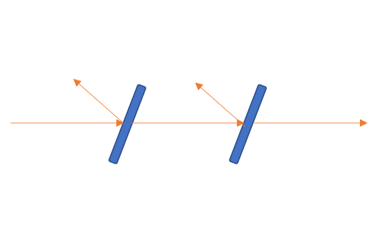How To Enhance Optical Blocking Using Multiple Filters

When signal light is very precious, any background light that reaches the detector of an optical system can greatly compromise signal to noise ratio. If the signal is low then the background must be maintained at an even lower level and so background light must be minimized. For instance, in a Raman analytical system only one in a million photons will be Raman scattered so each must be captured an analyzed from among the 999,999 non-Raman scattered photons.
In such applications, extremely high levels of blocking are necessary outside of the signal band of interest. Where a typical high-end system may specify an out of band blocking with an optical density of 6 or more (OD>6 or <0.0001%) some systems seek OD>8 or even OD>10. These levels are difficult, in some cases impossible, to manufacture, test, and guarantee with an individual optical filter.
This can lead to the proposition of using more than one blocking filter – the logic being that if one filter provides OD>6 then two filters together will provide double the blocking and achieve OD>12 (or at least close to this level). However, the way in which the blocking is achieved using multi-layer thin film filters, that is via reflection and not absorption, makes this a flawed argument unless there is careful consideration and set-up.
One plus one does not always equal two.
Get unlimited access to:
Enter your credentials below to log in. Not yet a member of Photonics Online? Subscribe today.
